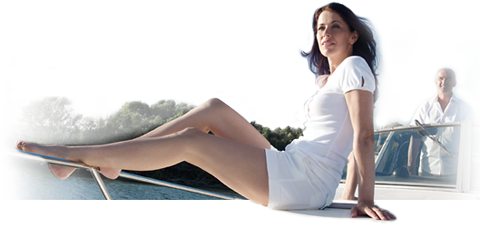Varicose veins are a common disease
You will find press releases on the topic here

Healthy legs well into old age: Sclerotherapy for treating spider and varicose veins
More and more people are getting older – and, naturally, they want to enjoy their extra years with optimum health. But longer life expectancy and a modern lifestyle means that venous problems are becoming an increasingly important issue. Sclerotherapy, which has been established for decades, can gently remove spider and varicose veins and greatly improve patient well-being, as has been confirmed by numerous scientific studies and more than 150 million successfully treated patients.
Our health problems increase with age
The life expectancy of Germans has more than doubled in only a few generations. On average, men now live to an age of about 78 and women to 83. Over-65-year-olds can look forward to 17 more years for men and 21 for women. However, longer life expectancy is also associated with an increase in age-related health problems – including leg symptoms caused by vein weakness.
Most elderly people have problems with their legs
The first signs of vein weakness often occur at an early age. A large study showed that every second German under 20 already has spider veins. These bluish-red blemishes on the thighs and lower legs develop when the veins can no longer cope with the pressure exerted on them. Blood collects in the vessels and dilates them, so that they bulge visibly – a process that severely affects the veins in the long run and can be associated with increasing symptoms, such as tired, heavy or swollen legs. It is not surprising, therefore, that most 60 to 80-year-olds complain of larger varicose veins and water retention, as well as recurrent paraesthesia, pain or cramps. The 59-year-old Munich resident, Renate B., also discovered that venous weakness can get worse: “When I was in my mid-30s, I discovered the first spider veins on my lower legs. They increased every decade until I really didn’t want to show my legs at all any more.”
Modern lifestyle promotes venous disorders
In general, the proportion of patients with venous disorders increases greatly with age. Our modern lifestyle means that both sexes are affected, even though women are more likely to develop spider and varicose veins than men due to their more loosely cross-linked connective tissue. Whether we are at work, watching TV or in the car, Germans are by now the world champions in sitting. Adults spend an average of 7.5 hours in this position and most of them do hardly any exercise to make up for it. In fact, many of them also avoid stairs if there is a lift available and they rarely do even small errands on foot. And yet every step would be balm for the veins, as exercise improves the calf muscles and venous blood flow. In addition, exercise can counteract being overweight – another disease of civilisation, which puts considerable strain on the veins. There is no doubt that spider and varicose veins will develop even earlier and more frequently if the trend to laziness continues.
Sclerotherapy provides an almost painless treatment option
Renate B. also spends many hours sitting at her desk in the office every day. She used to enjoy swimming in her leisure time – before the appearance of her legs prevented her. This was why she finally decided to do something about her spider veins. Apart from cosmetic reasons, there are also health-related arguments for not taking venous changes lightly. After all, varicose veins that remain untreated for years can lead to severe complications, such as chronic leg ulcers or thromboses, and can limit vitality and mobility, particularly in the elderly. To prevent this, Renate B. attended Dr. Stephan Guggenbichler’s Vein Centre, Munich. The vein specialist advised her to have sclerotherapy. It is considered the treatment of choice for spider veins and is a good alternative to surgery for larger varicose veins. Using a fine needle, the doctor injects a sclerosant containing the active substance polidocanol into the affected veins, which then close off and are broken down by the body in the following weeks. Compared with laser therapy and surgery, sclerotherapy of varicose veins is equally effective and less painful. As the procedure is performed without general anaesthetic or surgical “incisions”, patients can continue their normal activities immediately after their appointment.
A gentle procedure, even for the very elderly
This year, the sclerosing agent polidocanol, is celebrating its 50th birthday. During the past fifty years, the drug has cured spider or varicose veins in over 150 million people worldwide. In addition, countless studies have been published confirming its efficacy and tolerability. Just like Renate B., a growing number of elderly men and women are benefiting from the advantages of sclerotherapy. The very elderly suffer mostly from venous problems, but, due to their state of health, cannot or do not want to undergo surgery or are afraid of not being able to cope with the stress. Recent scientific studies have concentrated specifically on this patient group and have shown that sclerotherapy led to a significant relief of leg symptoms and a marked improvement in well-being and quality of life in almost all study participants. Renate B. also feels rejuvenated. She recommends sclerotherapy to people of all ages who attach importance to attractive and healthy legs and who, like her, are looking for a gentle treatment option. “And who knows”, she says delightedly, “I might even go to the swimming pool again regularly”.
You can find useful information and tips on spider and varicose veins and the various treatment options on the internet at www.healthy-veins.com.
